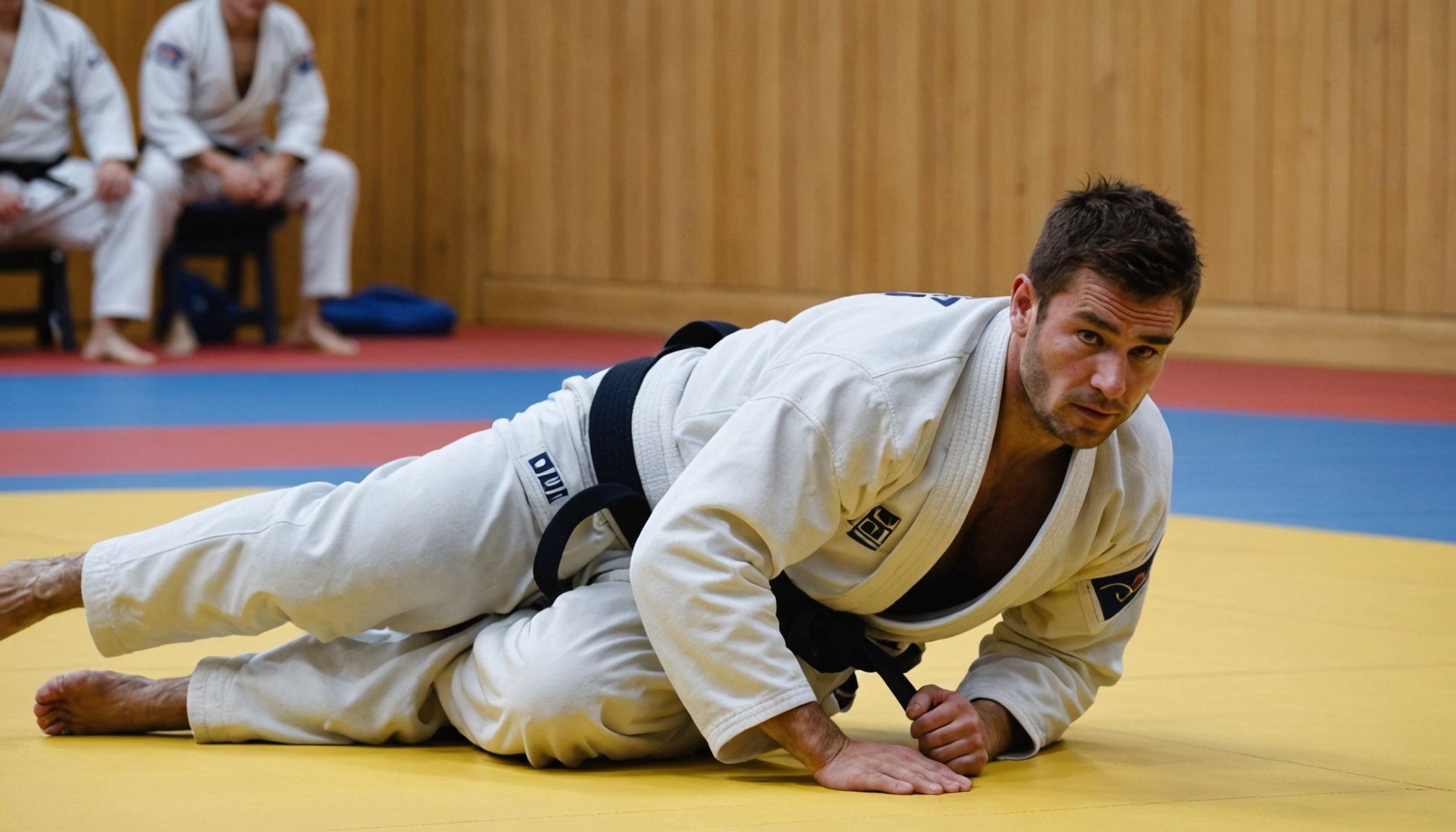Importance of Breakfall Techniques in Judo
Understanding the significance of breakfalls in judo is crucial for ensuring both athlete safety and maximising performance. In this martial art, breakfall techniques are designed to reduce the risk of injury during throws and falls, by allowing the practitioner to absorb and dissipate impact forces safely. Without the correct breakfalls, judoka are more susceptible to injuries, which can impede their participation and progress.
Breakfall techniques also play a pivotal role in overall judo skill development. They form an essential foundation, enabling athletes to perform more complex maneuvers with confidence. Mastery of these techniques often leads to improved balance, agility, and resilience, which are vital to succeeding in competitive settings. As judoka become adept at falling safely, they can focus more on their technique and strategy, instead of the fear of injury.
Also to see : Ultimate guide to off-season nutrition: key dietary tips for uk boxers
Additionally, enhancing competitor confidence is another key benefit of effective breakfalls. Athletes who are assured in their ability to fall safely are better able to take calculated risks during matches. This increased confidence not only boosts performance but also allows for a more expansive and aggressive approach to competition—factors that separate good competitors from great ones.
Key Breakfall Techniques for Coaches
Mastering breakfall methods is crucial for judo coaches to ensure their athletes’ safety. By understanding diverse judo techniques and employing effective coaching strategies, coaches can enhance their training sessions significantly.
Also to read : Elevate your boxing game: leveraging cutting-edge technology for enhanced punching precision among uk fighters
Forward Breakfall Method
The forward breakfall technique, or ‘Mae Ukemi,’ is essential for athletes learning to fall forward safely. This judo technique involves the athlete tucking in their chin, extending their arm outward, and rolling forward through the shoulder without allowing their head to hit the mat. It requires precise movement and timing, aspects that coaches should emphasise during practice.
Side Breakfall Method
The side breakfall, or ‘Yoko Ukemi,’ assists in reducing impact when falling sideways. Athletes should fold their arms across their chest while rolling onto one side, distributing their weight evenly. Coaches must focus on the fall’s fluidity, ensuring athletes do not injure themselves.
Backward Breakfall Method
‘Koho Ukemi’ aids athletes in landing safely when falling backward. The technique involves bending the knees, tucking in the chin, and rolling backward, with the lower back absorbing the impact. Coaches should remind athletes to keep their heads up.
Coaching strategies should adapt based on athletes’ skill levels, ensuring everyone benefits. Addressing common mistakes like improper arm positioning or rigid movements is vital for safety.
Drills to Reinforce Breakfall Skills
Breakfall practice is crucial in judo, aiming to safely control impact and prevent injury. Judo drills can be designed to accommodate different experience levels, starting with basic movements and progressively introducing more complex actions. For novices, simple backward and side breakfalls on padded mats allow them to focus on technique without risk.
Skill reinforcement is essential, so incorporating partner exercises adds a dynamic element to practice. Partners can help simulate real-life throws, enabling practitioners to adapt their breakfall in varying situations. This interaction not only sharpens reflexes but also builds trust between practitioners, enhancing the overall learning environment.
Safety remains paramount in breakfall practice. Proper use of mats is fundamental in minimizing injury risk, and encouraging adherence to safety protocols is necessary to foster a safe training environment. Mats are crucial, providing the impact absorption needed during falls, especially when performing more advanced drills.
Incorporating a variety of judo drills ensures well-rounded skill development. Using these drills within a structured training regimen helps practitioners of all levels continuously enhance their breakfall abilities. Through regular skill reinforcement and adherence to safety measures, practitioners can refine their techniques, leading to greater proficiency and confidence on the mat.
Coaching Methodologies for Effective Teaching
In the world of judo instruction, effective use of coaching methodologies can enhance athlete engagement and performance. A thoughtful approach involves utilizing a blend of feedback and observational techniques tailored to the needs of each athlete.
Feedback and Observation Techniques
To ensure maximum learning, coaches employ strategies for providing constructive feedback. This involves not just identifying what went wrong, but also suggesting practical solutions for improvement. Observations should be meticulous, noting both strengths and areas for development, thus providing athletes with a complete perspective of their progress.
Utilization of Visual Aids
Visual aids can be a game changer in judo instruction. The impact of video analysis on athlete performance is significant. By reviewing practice or competition footage, athletes can see their movements and identify patterns that need adjustment. This method reinforces verbal instruction and provides a clear picture of what needs improvement.
Encouraging Self-Assessment
Encouraging self-assessment is crucial to fostering a growth mindset. Athletes learn to critically evaluate their performance, setting personal goals and recognizing achievements. Self-reflection promotes a deeper understanding of judo techniques and helps build confidence. This approach empowers athletes to take ownership of their learning journey, enhancing both their skills and mental resilience.
Performance Benefits of Mastering Breakfalls
Mastering breakfalls offers significant benefits in enhancing both performance improvements and athlete safety. By reducing the risk of injuries during competition, athletes gain a competitive advantage, staying on top of their game without setbacks. Breakfalls, which are techniques used to safely absorb the impact of a fall, are critical in sports involving frequent body contact or high falls, like judo and wrestling.
When athletes consistently practise these techniques, they build physical and mental resilience. Developing this resilience not only improves their skills but also boosts their confidence during competitions. Being able to execute a fall without injury allows athletes to focus more on performance rather than bracing for potential harm. This mental resilience can be the deciding factor in overcoming nerves or fear, fostering a mindset conducive to high achievement.
Furthermore, mastering breakfalls contributes to enhancing overall performance. Proficient execution of these techniques can smooth out motions and transitions, translating directly into technical proficiency. Coaches and athletes alike should prioritise this aspect of training, knowing that it plays a pivotal role in both immediate results and long-term career longevity.
UK-Specific Context in Judo Coaching
Coaching judo in the UK involves understanding the local coaching context to effectively develop athletes. Each region may hold specific requirements or cultural nuances that can affect athlete development.
Understanding Local Competitions
Local competitions in the UK play a significant role in shaping the coaching context. Familiarity with regional tournaments is crucial. Coaches need to know the format, athlete development paths, and the common rules employed in these events. Ensuring athletes are prepared for these specifics can greatly impact their performance.
Involvement in the Judo Community
Building connections within the UK judo community is essential. Coaches should engage with local clubs, participate in workshops, and seek out mentorship opportunities. These actions foster a supportive environment that contributes positively to both coaches and athletes. By immersing themselves in the UK judo scene, coaches can exchange knowledge and stay updated on the latest trends and techniques.
Adapting Techniques to Local Regulations
Coaches must adapt techniques to comply with the UK’s unique judo regulations. Certain rules, especially those pertaining to breakfall techniques, may differ from international standards. Being aware of these key considerations ensures compliance and reduces injury risks for athletes. Tailoring coaching strategies to fit local regulations enables smoother competition experiences and improved safety.











